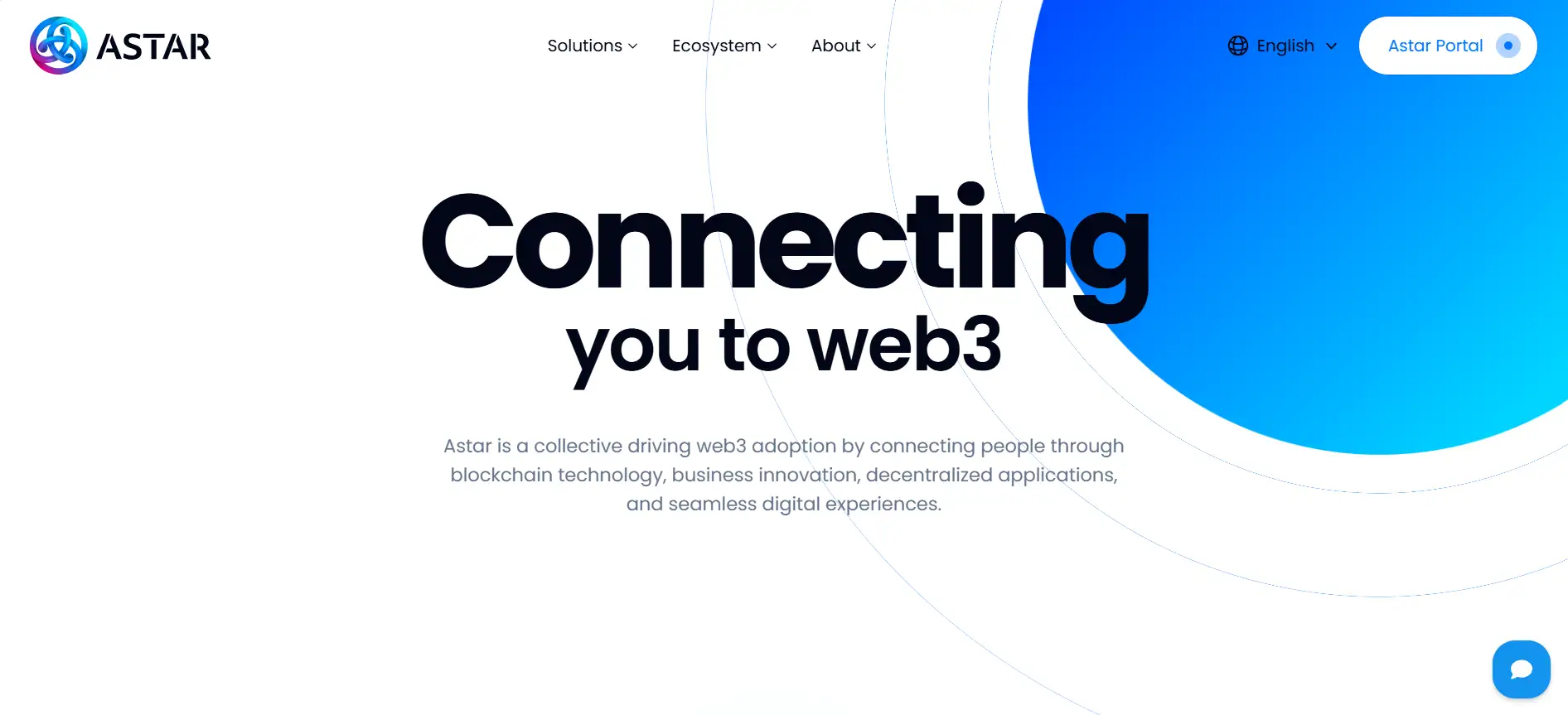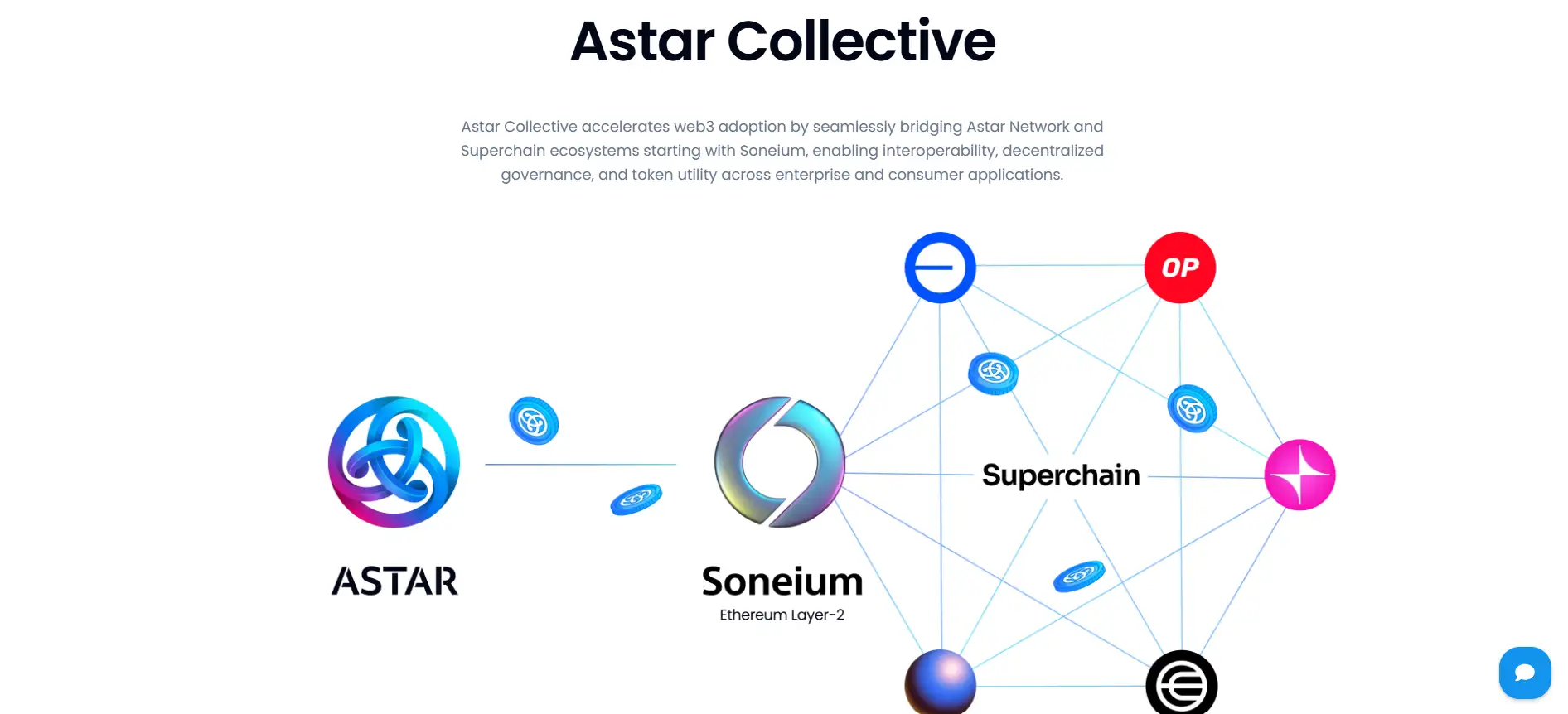About Astar
Astar Network is a next-generation blockchain platform built to bridge traditional industries with the Web3 world through a seamless, scalable, and interoperable infrastructure. Positioned as a hub for innovation in Asia and beyond, Astar is accelerating web3 adoption by supporting developers, enterprises, and governments to build decentralized applications with real-world impact.
With strong backing from industry leaders and strategic partnerships—including major names like Sony, Japan Airlines, and Calbee—Astar provides a high-performance environment through its dual-layer architecture consisting of Astar Layer-1 and Soneium Layer-2. Whether building NFTs, DeFi protocols, or government-backed Web3 solutions, Astar offers the infrastructure, developer tools, and economic incentives needed to power sustainable blockchain growth.
Astar Network serves as a powerful Layer-1 blockchain and parachain on Polkadot, designed to support scalable, multichain decentralized applications. It provides developers with a flexible environment to deploy smart contracts using both EVM and WASM, enabling a truly interoperable and composable ecosystem. Astar empowers builders with low gas fees, dApp staking, and robust governance tools, and serves as the gateway for high-performance Web3 applications across Asia and the global market.
Astar’s recent expansion includes the introduction of Soneium, a Layer-2 solution built with Ethereum compatibility and scalability in mind. Soneium leverages optimistic rollups, advanced authentication systems, and cross-chain interoperability to offer low-cost, high-speed Web3 experiences. Together with Astar’s mainnet, this dual-layer architecture caters to both high-throughput enterprise applications and grassroots decentralized apps.
The network’s ecosystem spans DeFi, gaming, NFTs, and consumer dApps—featuring names like StellaSwap, Galxe, Lucky, and Uniswap. It also boasts government collaborations, including JR Kyushu’s use of NFTs for railway customer engagement and Shibuya City’s support for entrepreneurs. Through initiatives like the Web3 Incubation Program by Sony and the Astar Contribution Score (ACS), the platform fosters developer success and incentivizes community contributions with $ASTR rewards.
What sets Astar apart from competitors such as Polygon, zkSync, and Arbitrum is its dual VM support, native Polkadot integration, dApp staking system, and deep ties to government and enterprise sectors in Asia. This unique combination of technology and community positioning enables Astar to drive real-world Web3 adoption at scale.
Astar Network offers a wide array of features and benefits that set it apart in the world of decentralized applications:
- Dual-Layer Architecture: Combines Astar Layer-1 on Polkadot with the Ethereum-compatible Soneium Layer-2 for scalability and flexibility.
- dApp Staking: A unique model that rewards ASTR holders for supporting developers by staking on applications.
- Multi-VM Support: Supports both EVM and WASM, enabling developers to use Rust, Ink!, or Solidity-based smart contracts.
- Interoperability: Built on Polkadot and supports IBC and rollup technologies for seamless cross-chain communication.
- Low Fees & Fast Finality: Efficient consensus mechanisms ensure quick transactions at a fraction of the cost of traditional chains.
- Real-World Adoption: Used by companies like JR Kyushu, Sony, and Calbee for consumer-facing blockchain solutions.
- Community Incentives: The Astar Contribution Score (ACS) rewards users who engage in staking, DeFi, content creation, and app usage.
Getting started with Astar is streamlined for developers, enterprises, and users alike:
- Visit the Portal: Head to the Astar Portal and explore the tools and documentation.
- Connect Your Wallet: Use wallets like MetaMask or Polkadot.js to access the Astar Network and stake or interact with dApps.
- Participate in dApp Staking: Stake $ASTR on your favorite apps to earn rewards and support developers.
- Deploy Smart Contracts: Choose between EVM or WASM environments and build using Solidity, Rust, or Ink! with full access to SDKs and dev tools.
- Explore the Ecosystem: Try out leading dApps like StellaSwap, Archisinal, Uniswap, and Singular.
- Earn Rewards with ACS: Increase your Astar Contribution Score by using apps, providing liquidity, and participating in governance.
Astar FAQ
The Astar Contribution Score (ACS) is a community-driven incentive system designed to reward users who actively participate in the Astar and Soneium ecosystems. Whether you're using dApps, providing liquidity in DeFi protocols, or contributing content, ACS tracks your engagement and allocates $ASTR rewards accordingly. It democratizes network incentives and aligns users with ecosystem growth. Learn more at astar.network.
Astar Network consists of a Layer-1 chain on Polkadot and a Layer-2 chain called Soneium. This dual structure offers the best of both worlds: secure, interoperable base-layer support with Polkadot and scalable, low-cost application support through Soneium. Enterprises benefit from Layer-2's speed and consumer focus, while developers enjoy flexibility with EVM/WASM and robust SDKs. Full architecture details are on astar.network.
Astar is the leading blockchain platform in Japan, trusted by major enterprises and supported by the government. Its fast finality, low fees, and enterprise-grade security make it ideal for mass-market applications like NFTs, tourism campaigns, and entertainment projects. Notable collaborations include Sony, Calbee, and JR Kyushu. Founder Sota Watanabe also advises on national Web3 policy, reinforcing Astar’s alignment with Japan’s digital strategy. Learn more at astar.network.
dApp staking allows $ASTR token holders to stake their tokens directly on decentralized apps. This supports developers with ongoing funding and rewards users with staking income. It's a unique model that promotes sustainable app development while aligning economic incentives across the community. Developers benefit from reliable funding, and users earn yield while supporting their favorite projects. Try it at astar.network.
Yes, Astar Network supports both EVM (Ethereum Virtual Machine) and WASM (WebAssembly), giving developers the flexibility to write smart contracts in Solidity, Rust, or Ink!. This dual-VM architecture allows seamless deployment across different environments, encourages innovation, and ensures compatibility with existing Ethereum tools as well as the Polkadot ecosystem. Explore developer tools at astar.network.
You Might Also Like












